The Woodland Cultural Centre operates a museum, curates exhibitions, runs workshops and presentations, and so much more – all in the service of protecting, promoting, interpreting and presenting the Hodinohsho:ni worldview.
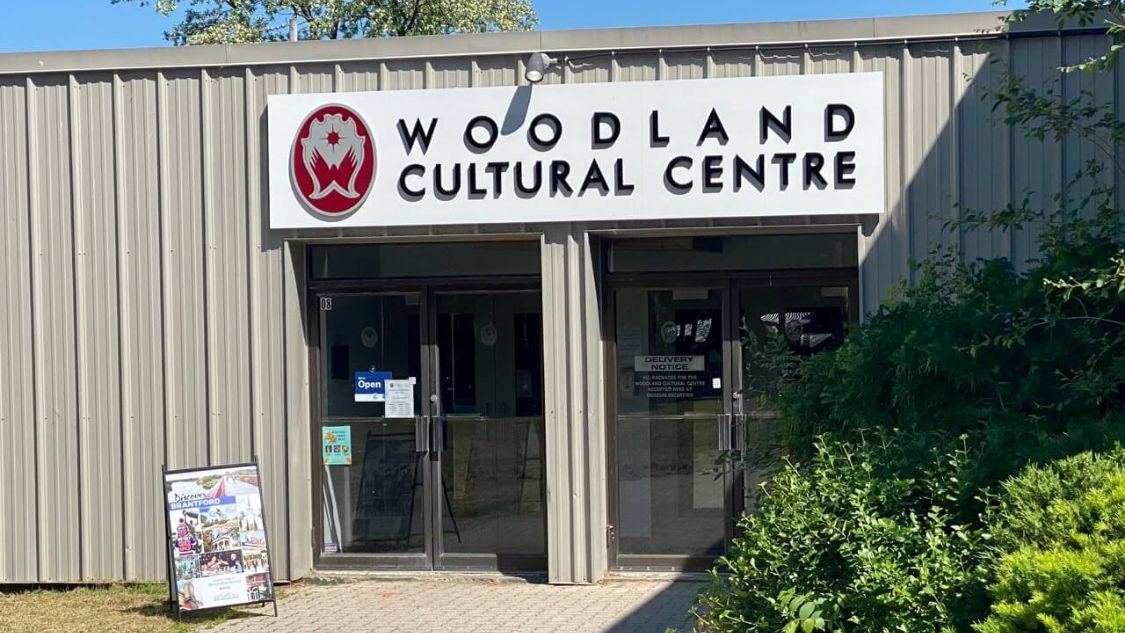
We recently had the chance to visit Brantford once again, and at the top of our list was a visit to the Woodland Cultural Centre. Since we’ve been running Ultimate Ontario, it’s become clear to us that this province has a remarkable amount of stories to tell, but that it’s never been more important to ensure that we’re listening to all voices.
The Woodland Cultural Centre (also known as “the WCC”) has been around since 1972, and it was established shortly after the closure of the Mohawk Institute Residential School, a building which still stands beside the WCC to this day.
Our goal with this article is to demonstrate how you can visit the Woodland Cultural Centre, to share their story, to talk about how you can learn from and support their causes virtually, and to let you know about their upcoming exhibitions and generally how you can follow along with their initiatives.
A Brief History of the Woodland Cultural Centre
The Woodland Cultural Centre opened its doors in 1972 under the direction of the Association of Iroquois and Allied Indians. It was initially known as the Woodland Indian Cultural Education Centre, but the name was changed in 1988 to the Woodland Cultural Centre. In the early days, the Centre was focused on collecting research and artifacts, but eventually began to focus on the important of the arts.
An education department was established in 1983, and the following year the language department was also established.
The WCC sits beside The Mohawk Institute, a residential school that opened its doors around 1831 and didn’t close them until 1970. Currently, the Mohawk Institute is being searched and investigated by the Survivors Secretariat, a group that notes they are “survivor led, trauma-informed, and community involved.”
Due to the ongoing research as well as rehabilitation, the Mohawk Institute is not currently open to the public, but we’d strongly encourage you to watch the Mohawk Institute Residential School Virtual Tour, which you can find on the WCC’s Upcoming Events Page. We’ll talk in more detail about that below.
The Woodland Cultural Centre is one of the largest facilities in Canada managed and administered by First Nations.
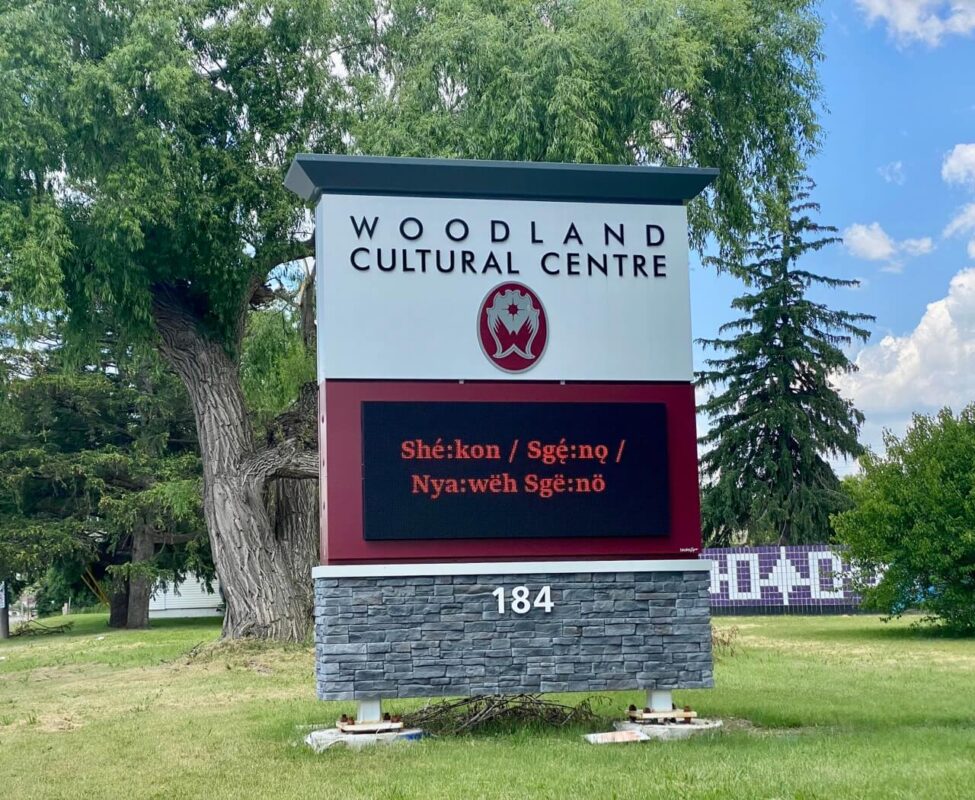
Aims of the Woodland Cultural Centre
Below, we want to share highlights of the the vision, mission and mandate set forth by the WCC.
“Our mission is to protect, promote, interpret, and present the Hodinohsho:ni worldview. As a centre of excellence, Woodland Cultural Centre envisions a future where Hodinohsho:ni people will speak their language, know and practice their culture, and share their history.”
They aim to achieve their goals by:
- “Facilitating Indigenous and non-Indigenous understanding by providing education opportunities, producing innovative exhibitions, promoting local artists, and creating language resources.
- Inspiring and engaging communities through the accessibility of the collection for present and future generations
- Fostering relationships with community-based organizations, academia, and cultural institutions to produce multi-disciplinary programming, strengthen oral traditions and language retention, and renewal of contemporary and traditional artistic practices
- Ensuring accurate documentation, education and promotion of the values, practices, language, national treasures and articles of Indigenous peoples
- Honouring Residential School survivors by ensuring Indigenous voices and perspectives are leading and defining reconciliation efforts”
The goal values of the Centre are aligned with the cornerstone principles of the Great Law of Peace, a philosophy that’s integral to the Hodinohsho:ni way of life. Namely, Skén:nen (peace, resolution, love, gratitude), Ka’nikonhrí:yo (good mind, commitment, respect, responsibility), and Ka’satsténshsera (power/strength, to get things done, generosity, collective thinking).
How Can You Best Experience the Woodland Cultural Centre in Brantford, Ontario?
There are a number of ways that you can get better acquainted or involved with the WCC, and we’re going to take the time to list them for you below.
Visit the Museum
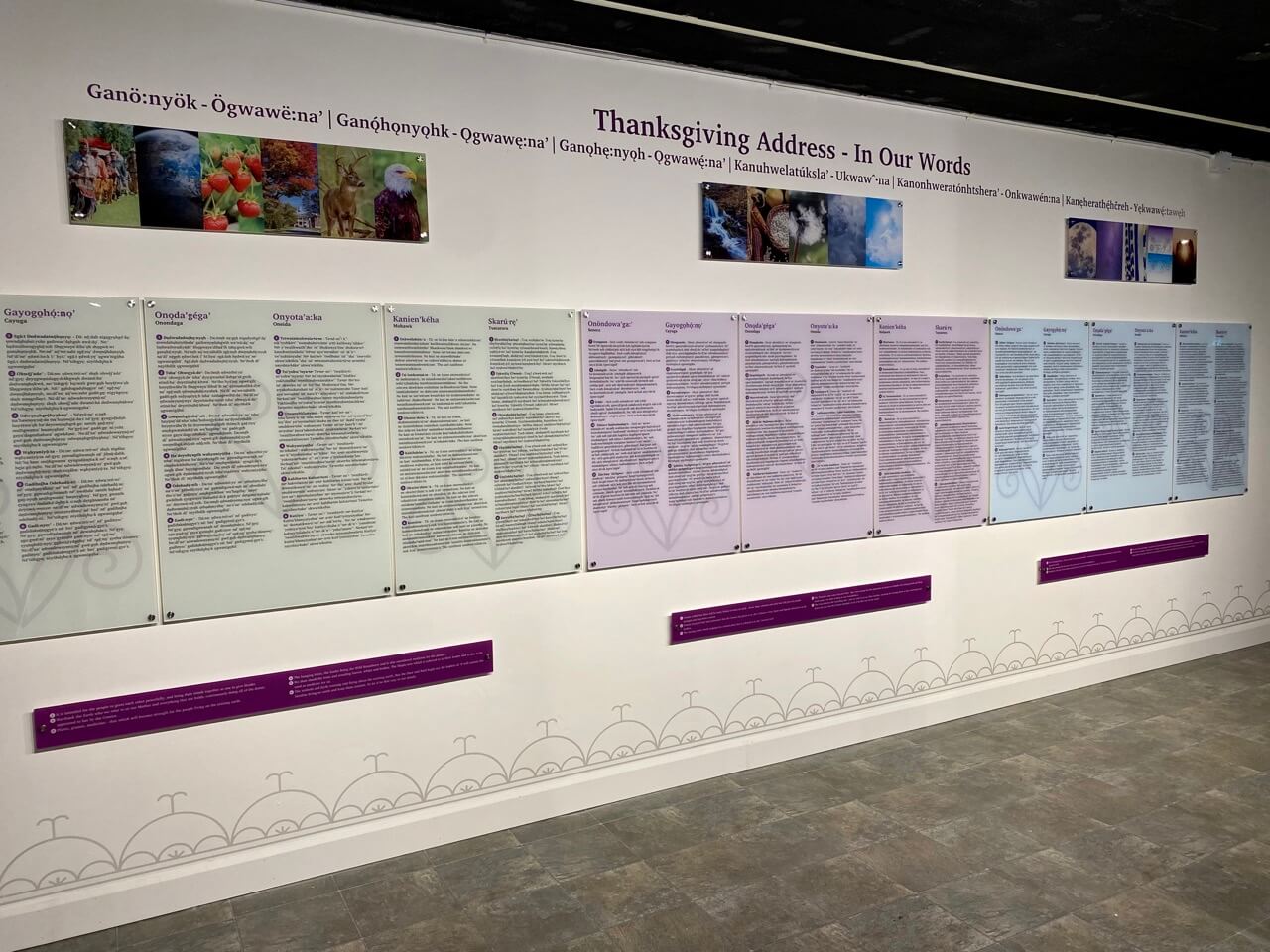
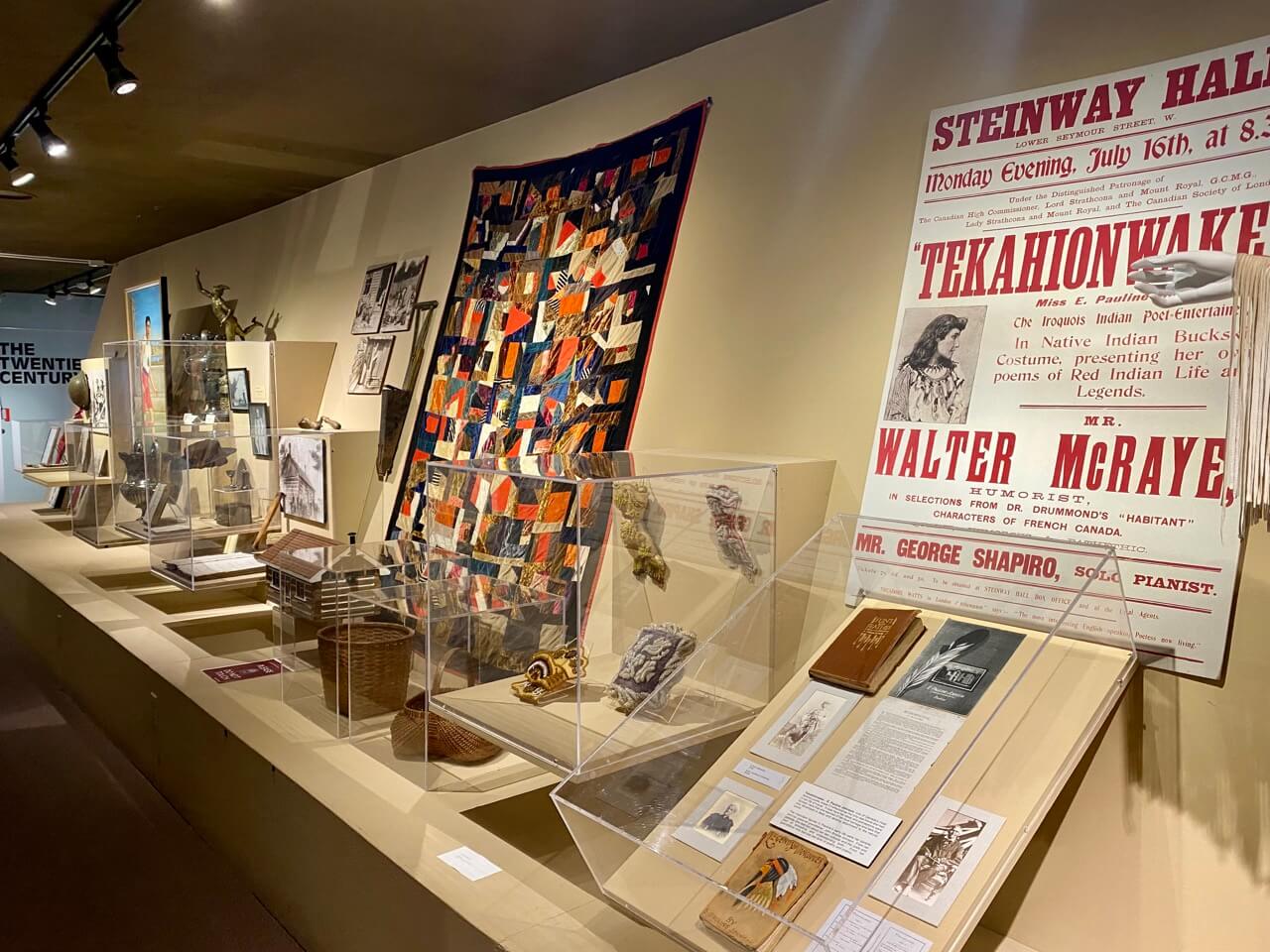
If you’re walking through the museum self-guided, we’d recommend utilizing the self-guided tour booklet put together by them. If you’re looking for a guided visit, you’re best to contact [email protected], or call 519-759.2650 x 221.
The museum aims to show the history of the Woodland people, and specifically the Six Nations. For those who don’t know, the Six Nations consists of the Onondaga, Mohawk, Cayuga, Oneida, Seneca, and Tuscarora. They aim to cover a history that spans roughly 600 years ago until the present day.
They sum it up well on their site when noting that, “the permanent museum is an integral element of the Woodland Cultural Centre. Presented as a journey through linear time, the museum presents a storyline featuring artifacts from prehistoric through historic and into contemporary times. The museum offers visitors the chance to experience pre/post-contact Southern Ontario as seen through the eyes of the different Indigenous Nations that have occupied this land. Proto-Iroquoian culture, Neutral Iroquoians, the Confederacy of the Haudenosaunee, and the modern communities of Wahta Mohawks, Mohawks of the Bay of Quinte, and Six Nations of the Grand River are represented in this unique timeline journey.”
Appreciate Their Current Exhibitions
The Woodland Cultural Centre has three exhibition spaces where they rotate contemporary art and historical exhibitions. Typically, these exhibitions run in 3 month cycles. The largest gallery is the Tom Hill Gallery, followed by the E. Judy Harris Gallery, and finally the Stan Hill Gallery.
You can check here to see what exhibition is currently running. Right now, for example, they’re running Sense of Belonging: A Place Called Home featuring “three contemporary Indigenous lens-based women artists whose artistic practice weaves painting, beadwork, photography to connect the notions of identity, family, community and land.” Rosalia Favell, Alex Jacobs-Blum, and Shelby Lisk are all having their work displayed, respectively.
Take Note of Upcoming Events
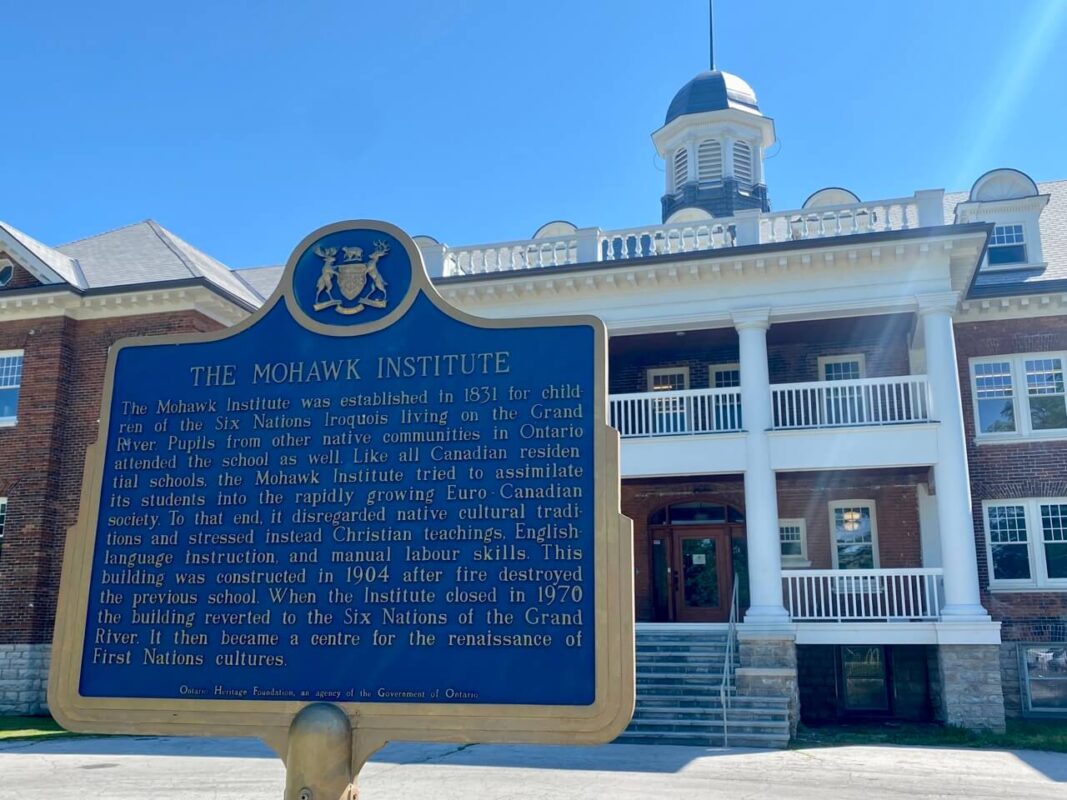
They’ve got an events page that they update regularly, so that’s a great place to start. In particular, we want to mention the monthly showing of the Mohawk Institute Residential School Virtual Tour. A video like this, to us, should be required viewing for all Canadians in order to properly grasp what life was like at residential schools.
The cost is a $10 donation to the education department at the Woodland Cultural Centre, which you can book through the events page linked up above. When we visited the Woodland Cultural Centre, we had a chance to watch the 45 minute video, and then to have a 45 minute or so discussion with the staff.
Loretta, the staff member we were fortunate to have guide our discussion, highlighted to us that “Indigenous people are not people you learn about in a history book,” and are in the process of “moving from trauma to resilience.” She mentioned that she was grateful for the interest that people have shown in taking this virtual tour, while also mentioning that “you can’t be an expert in a couple of days or weeks.”
Taking that to heart, we’ll be aiming to continue to build out our Indigenous content, and to ensure we’re doing our part to highlight and share a multitude of experiences and voices from Ontario’s diverse and expansive Indigenous community.
In terms of the virtual tour itself, it was “created with local production company ‘Thru the Reddoor‘, and it follows the guide, Lorrie Gallant, as she gives a tour of the former Mohawk Institute Indian Residential School. During the video Lorrie provides the history of the institution over its 140 year history. Viewers will get to see the different rooms in the school, from the girls’ and boys’ dormitories, the cafeteria, laundry room, and other rooms throughout the building, as well as hear interviews from five Survivors of the Mohawk Institute.”
As we noted, you can check the events page for the next showing of the virtual tour.
Engage With Their Workshops and Educational Programming
The Woodland Cultural Centre does a great job of outlining what’s coming up next in terms of workshops and educational programming on their Experience Woodland page.
To give you an idea of what’s on offer, here is some of their programming:
- “Truth and Reconciliation Presentation”
- “Traditional Games”
- “Six National Land Claims”
- “Our Sustenance”
- “Hodinohsho:ni Governance”
- “Stereotypes and Racism”
You can book these experiences directly on their site, but you can also email [email protected] to get further information.
What Else Should You Know?
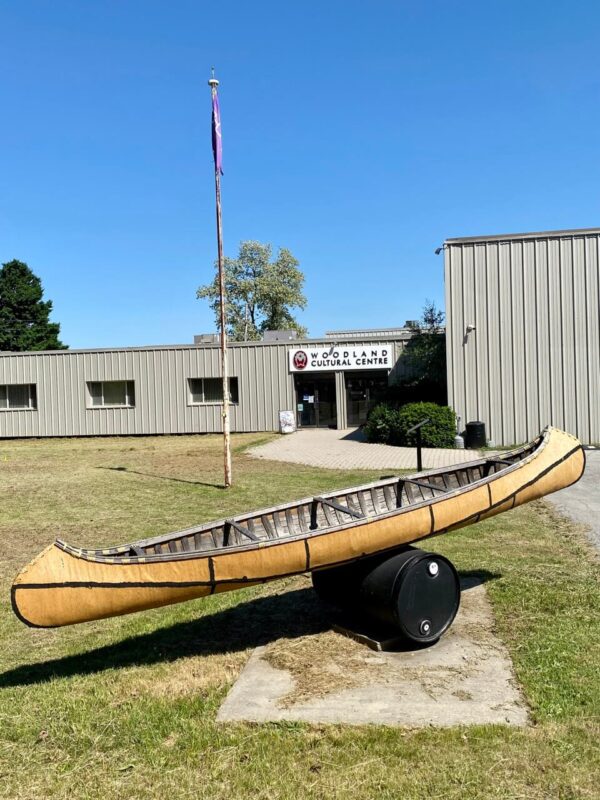
There’s a lot going on at the Woodland Cultural Centre at any one time, and that means there’s a lot to talk about. What else should you know?
- The WCC has books, housewares, clothing, and more that are available in their shop.
- They’ve got a number of language resources including literature, audio, YouTube content, and even a free e-dictionary app for Gayogoho:no (Cayuga).
- They regularly update the news section of their site, so you can head there if you want to see what they’re working on.
- The WCC also helps to facilitate and build out a number of different newsletters and reports, and all of that can be found here.
- If you want to directly support the work from WCC, and you can do that online quite easily.
We appreciated the opportunity to get to visit the Woodland Cultural Centre, and in particular, to be able to watch the virtual tour of the Mohawk Institute and then have a discussion about what we’d seen. Even if you can’t make it to Brantford in person, consider watching that virtual tour as a starting point, as we found it to be extremely eye-opening and important content.
We want to thank the Woodland Cultural Centre for taking the time to welcome us as media. It was a learning experience for us that we’re grateful for, and we acknowledge that we have more learning to do, and invite our readership to join us on that journey of learning.
Christopher Mitchell is the Cofounder of Ultimate Ontario. He’s visited over 80 countries, and has lived on 4 continents, but now has his eyes set squarely on exploring this incredible province, and helping others do the same.
